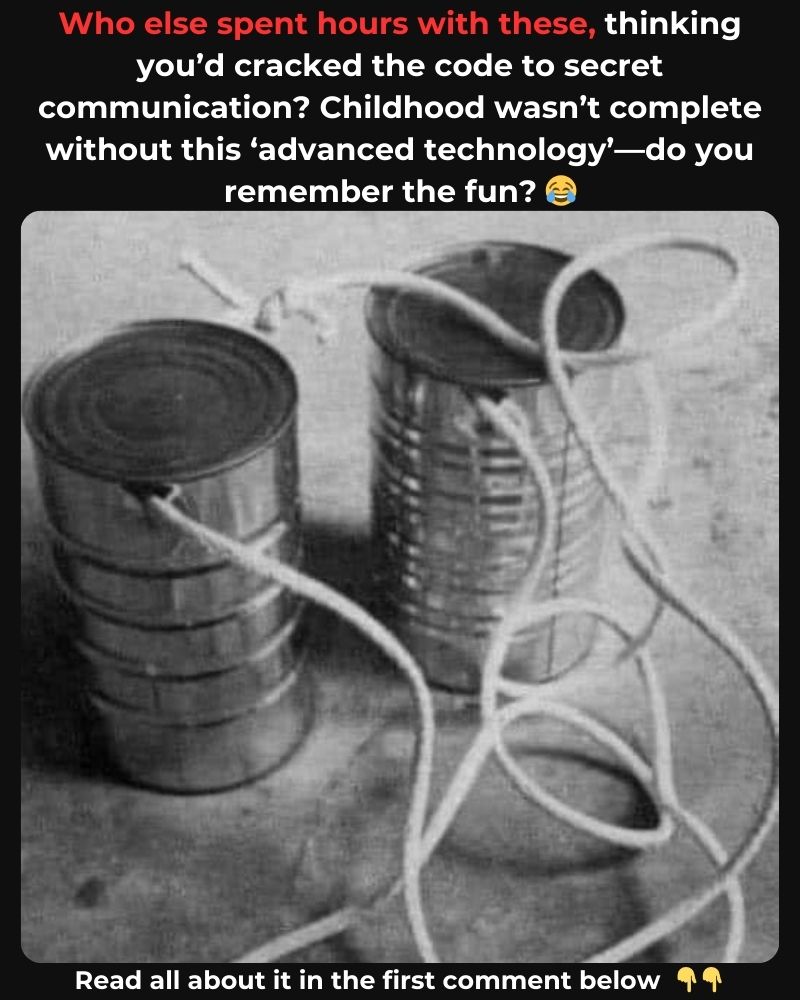In the age before smartphones and instant messaging, communication was often more creative than technological. One iconic symbol of this creativity is the can and string phone. For generations, this simple device brought joy and fascination to children and adults alike. But it wasn’t just a toy—it was also a hands-on science lesson and a testament to human ingenuity. Let’s take a journey back in time to explore the story behind this humble yet magical invention.
The Birth of the Can and String Phone
The concept behind the can and string phone is rooted in basic physics. It operates on the principle of sound wave transmission through a taut string, allowing vibrations to travel from one can to another. While the exact origins of the idea are unclear, experiments with similar sound-transmitting devices date back to the 17th century. Robert Hooke, an English scientist, documented experiments involving stretched wire and cups as early as 1667. However, it wasn’t until the 19th century that the idea became a household phenomenon.

The can and string phone became particularly popular in the 20th century, thanks to its simplicity. It required just two tin cans (or paper cups) and a piece of string. This do-it-yourself device transformed everyday objects into tools of communication, sparking curiosity and creativity among children everywhere.
A Childhood Staple Across Generations
If you grew up in the mid-20th century, you likely remember the thrill of making a can and string phone with your friends. The process was part of the magic—piercing a small hole in the base of each can, threading the string through, and tying a knot to secure it. Stretching the string tight and whispering into one can felt like unlocking a secret world. Hearing your friend’s voice on the other end was nothing short of miraculous.
For many children, the can and string phone was more than a toy; it was a portal to adventure. It turned backyards into secret headquarters and treehouses into communication hubs. The device encouraged teamwork, problem-solving, and imagination in an era when screen time was limited to Saturday morning cartoons.

The Science Behind the Magic
The magic of the can and string phone lies in its simplicity. When you speak into the can, your voice creates sound waves that vibrate the bottom of the can. These vibrations travel along the taut string as mechanical waves. When they reach the other can, the vibrations are converted back into sound waves, allowing the listener to hear your voice.
For many, the can and string phone was their first exposure to the principles of sound transmission and physics. Teachers and parents often used the device to explain concepts like tension, vibration, and wave propagation in a hands-on way that textbooks couldn’t replicate.
Cultural Significance and Nostalgia
The can and string phone is more than a relic of the past; it’s a symbol of ingenuity and playfulness. In an age of hyperconnectivity, it serves as a reminder of simpler times, when communication didn’t require Wi-Fi or data plans. The device also holds a place in popular culture, appearing in countless films, cartoons, and books as a whimsical representation of childhood curiosity.
For older generations, the can and string phone is a nostalgic trip down memory lane. It evokes images of lazy summer afternoons, neighborhood friendships, and the kind of play that required no batteries or screens. For younger generations, it’s a fascinating artifact that bridges the gap between the past and present.

Fun Facts About the Can and String Phone
- A Precursor to Modern Telecommunication: The can and string phone is often compared to Alexander Graham Bell’s early experiments with the telephone. While Bell’s invention relied on electricity, both devices share the fundamental goal of transmitting sound.
- Materials Matter: The quality of the sound transmission in a can and string phone depends on the materials used. Tin cans work better than paper cups, and a nylon string transmits vibrations more effectively than cotton.
- A Worldwide Phenomenon: Versions of the can and string phone have been made using materials ranging from bamboo to clay pots, reflecting the creativity and resourcefulness of different cultures.
- Educational Value: Even today, teachers use the can and string phone in classrooms to demonstrate scientific concepts and inspire curiosity among students.
Lessons from a Bygone Era
The can and string phone represents an era when creativity was the cornerstone of play. It encouraged children to think critically, work collaboratively, and find joy in simple things. In a world increasingly dominated by digital technology, the device serves as a powerful reminder of the value of hands-on learning and human connection.

Conclusion
The can and string phone may no longer be a staple of childhood, but its legacy endures. It’s a testament to the power of ingenuity and a reminder of the joy that comes from creating something with your own hands. Whether you’re reminiscing about your own childhood adventures or introducing the concept to a new generation, the can and string phone continues to inspire wonder and curiosity.
So the next time you see an old tin can and some string, consider making your own can and string phone. Who knows? You might just rediscover the magic of this timeless invention.



